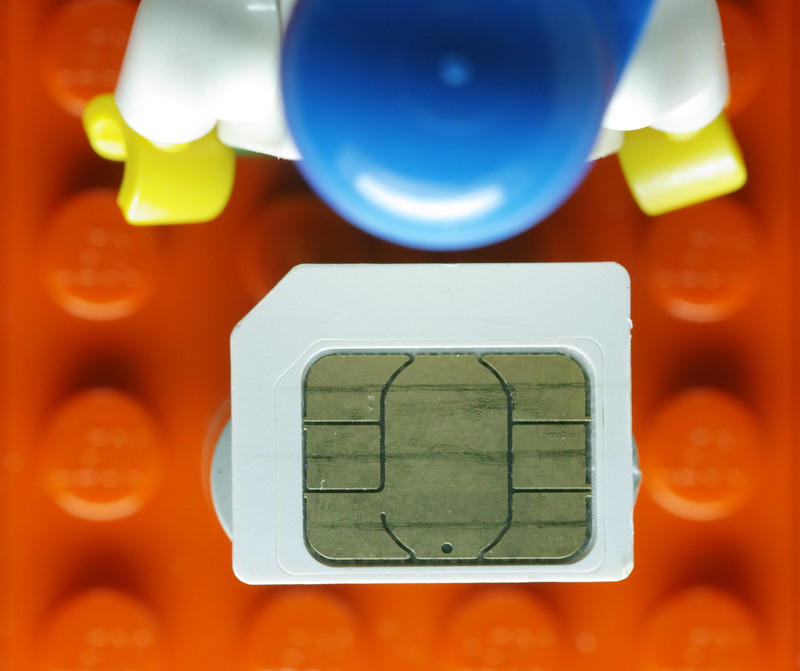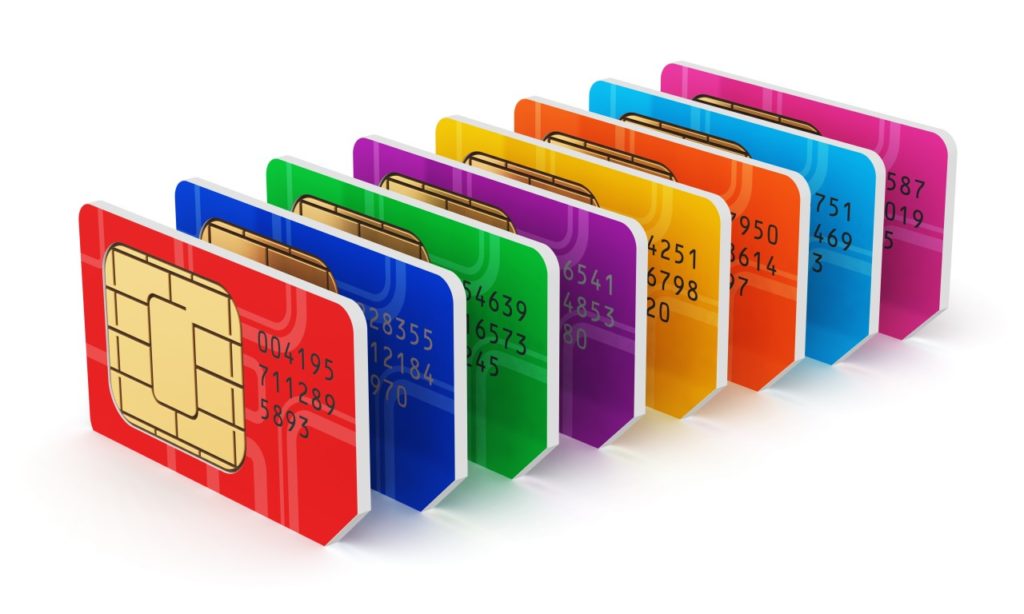The 2020s are definitely going to be an era of major changes for cellphone technology. Particularly when it comes to coverage. At least, that’s what we’re expecting. One of the novelty items in this new age of cell technology is the possibility of getting a Global eSIM card. In short, this is an eSIM that’s potentially going to allow you to obtain cell coverage no matter where you are in the world. That seems like a great idea right? If this becomes the norm in fact this site might be rendered useless. Is getting a global eSIM card worth it? Do they really provide worldwide coverage?
With any wireless service plan that you buy you want to make sure that you understand the particulars. That sounds super obvious, but yet every year people turn up to wireless service providers stores, and get sucked into long term plans by what is literally a phone service salesperson. That’s not to say that all long term plans are bad. What we are saying is that a lot of people aren’t even fully aware of what they are getting themselves into when they sign on that dotted line. A big part of getting a global eSIM card is making sure you understand the coverage limits, and the rates on said card. As well as the quality of the coverage itself. This last aspect may be the biggest issue of them all.
- Does A Global eSIM Card Get Me Coverage Throughout The Whole World?
- The Quality of The Coverage Is The Key
- Who Will A Global eSIM Card Make Sense For?
- Can I Keep This Card As A Backup Plan?
- Regional or Nationwide Coverage Instead of Global Coverage
- What You’ll Most Likely Be Giving Up With A Global eSIM Card
Does A Global eSIM Card Get Me Coverage Throughout The Whole World?

The simple answer should be yes right? For most global eSIM card options the answer is actually no. There’s going to be a set number of countries that you’re potentially going to be able to get coverage in. At least at the time of writing for this particular article there is no one global eSIM network that’s going to get you coverage in the entire world. That’s not to say though, that you won’t get coverage in a ton of countries. With some of the options that are out there you could expect to get coverage in something like 70 countries just on one card. Although 70 countries isn’t the entirety of the world it is certainly a good portion of it.
If you’re looking for reasons to answer yes to the question of is getting a global eSIM card worth it, one of things that you can point out is that most eSIM cards are not going to offer you coverage in more than one country. There are regional SIM cards like the EuroLink option that offers coverage throughout the EU. Even that option is only going to offer coverage in a handful of countries. It’s nothing compared to what you can expect to get from a global SIM card. The big question is still, why do eSIM companies offer local, and regional eSIMs if the global option is so great? We’ll try and keep exploring this.
The Quality of The Coverage Is The Key

To figure out the answer to the question “is getting a global eSIM card worth it?” you need to be sure that this global eSIM card is capable of offering decent coverage. If the quality of the coverage just isn’t there it’s going to be hard to justify buying a global card. The problem with global cards is that you may not be able to really know what the quality of coverage is in one spot until you get there. Maybe you end up putting some money on the global eSIM that very well could’ve gone to a local or regional eSIM, that potentially could offer better coverage.
How could you tell if the coverage is going to be good or not? As we mentioned one of the issues is that in reality you can’t tell much until you get there. What you want to figure out though is what network the card that you’re using is going to have access to. This is something that most eSIMs actually do tell you. If you can’t find that information that may be the first red flag that you want to be on the lookout for. What you want is to make sure that you are getting access to a local network with your card, and that you don’t have any speed caps on your coverage. The issue here is that you may get great coverage in some countries, and average coverage in others.
Who Will A Global eSIM Card Make Sense For?
Obviously if you’re someone who goes to sleep in LA and wakes up in Sydney Australia you’re going to want one of these cards. Yet, with the price tag on these cards and the way that you’re able to activate them it can make sense even if you’re taking one long trip, and you maybe don’t take another trip for a year or so. Most of these global SIM cards or eSIMs are going to come tied to an app that you’re going to be able to use to manage your coverage options. All that you have to do is head out to a new location and the network should recognize where you are in the world and provide coverage to your phone provided that you’ve purchased enough data.
Since these global SIM cards work like prepaid plans you don’t have to get into a contract and deal with a company that’s going to be harassing you to pay a monthly bill. Since they are eSIM cards in most cases you don’t even have to keep track of an actual card that you have to insert into the phone. We say all of this to set the scene for this idea that in fact anyone can use it. If you’re taking one trip that will see you land in multiple countries in a short span, a global eSIM card could totally be worth it. Even if you’re not necessarily an avid international traveler in your life after that trip.
Can I Keep This Card As A Backup Plan?

This is actually a pretty good idea, but you have to understand the type of card that you’re buying in order for it to really make sense for that purpose. One of the benefits for example to go out and buy one of these cards and keep it for the long haul is that you’ll have a set number for when you go abroad right. People are going to know where to reach you when you travel. The problem with many of the cards that offer worldwide service is that they are data only so the number thing isn’t a benefit that you can achieve. Also, some cards will just stop working if they are inactive for a set period of time. Keeping the actual card may not make a ton of sense.
What you can do is get an eSIM through a platform such as Airalo, and you’ll be able to add credit to your eSIMs on their site. You can keep credit on a global eSIM card. That could certainly get you to answer yes to the main question of, “Is getting a global eSIM card worth it”. For us it is a bit of a dilemma, and naturally we’ve been fighting this the whole article. You can get local eSIMs just as quickly through a site like that. Maybe the benefit is that you’ll just have to add credit to the global card and not have to look for the country that you’re traveling to on their list of options.
Regional or Nationwide Coverage Instead of Global Coverage
We basically had a bit of a head start on this topic in the last paragraph, and if we’re honest about this is where the whole crux of the problem lies. Why do you want global coverage if you can just buy local or regional coverage? If I have a global card why would I need to buy global coverage? It all comes down to what the source of the coverage is. This can be hard to track down when you have a global card. Although if a network like Airalo can provide regional coverage then the card system wouldn’t necessarily be relevant anymore. You could just buy coverage and the device should know where to fetch the coverage from.
As things stand though, there’s not necessarily a network that operates in this manner. That’s why local SIM cards are still being sold to travelers. The problem with a global eSIM is that it can potentially fetch the coverage that it’s giving you from an unreliable source. The main benefit that you have when you look for regional coverage is that you can literally pick the network that you want to get coverage from. The downside to this is that any credits or data that you still have on your card by the time you leave the country are going to be useless. Something that shouldn’t happen with a global SIM card.
What You’ll Most Likely Be Giving Up With A Global eSIM Card

Again this is going to follow right along with what we were just talking about. A global eSIM card is not going to give the user the option to choose the network that it’ll connect them to. We had this issue with some regional eSIM cards as well. Like the ones that promise coverage throughout Europe, but they source the coverage let’s say from the UK. If you’re outside the UK the quality of the coverage that you’ll get from that regional eSIM could potentially be lower than what you could expect to see from a local SIM card. There seem to be very clear ways to fix this in a global SIM card concept. Just allow people to pick the network that they want to be on. Again, a marketplace like Airalo seems to be in a good position to be able to do that. By most accounts they are not there yet though.
What you’re giving up is the freedom to search for the best coverage available. Some people can argue that they are willing to give that up in favor of not having to worry about dealing with buying local SIM cards and things like that. That seems all good and well, and actually it can work perfectly until something goes wrong. That’s the problem with not looking for a reliable network and instead going for comfortable or low cost options. Everything works great, until it doesn’t. If and when things fail, that’s when you may wish you’ve taken a different path.
Is Getting A Global eSIM Card Worth It – Conclusion
We’ve been back and forth on the actual answer to the question that we based this article on. That’s potentially the right answer, it can make sense for some people, but not for others. From the way that wireless services work it’s highly unlikely that we’ll ever get a global eSIM card at really low prices. That’s the big issue, right now getting a local eSIM card could be much cheaper than getting a global one and having to add credit to that world wide card. That’s because wireless services are still run by companies that have heavily invested in a local network. Cheap access for competitors may be hard to come by. Although, Google Fi is defining that idea.
As we mentioned before with the way that these prepaid eSIM cards work it could be a nice luxury to have as a backup plan. Particularly if you arrive in a country that isn’t making it easy for you to find local coverage. The most telling sign for us is actually within eSIM marketplaces like Airalo. If the global card was the best option you’d think they’d stop selling regional cards. Why go through the trouble of expanding your line of products? Local eSIM coverage gives you more control over the actual coverage that you’ll be getting!
Get An E-SIM Card To Access Low Cost Coverage In Any Country In The World

In doing so you’ll be supporting us create more content to help you find coverage as you travel. At the same time you may be solving the issue that you came here for help on!
